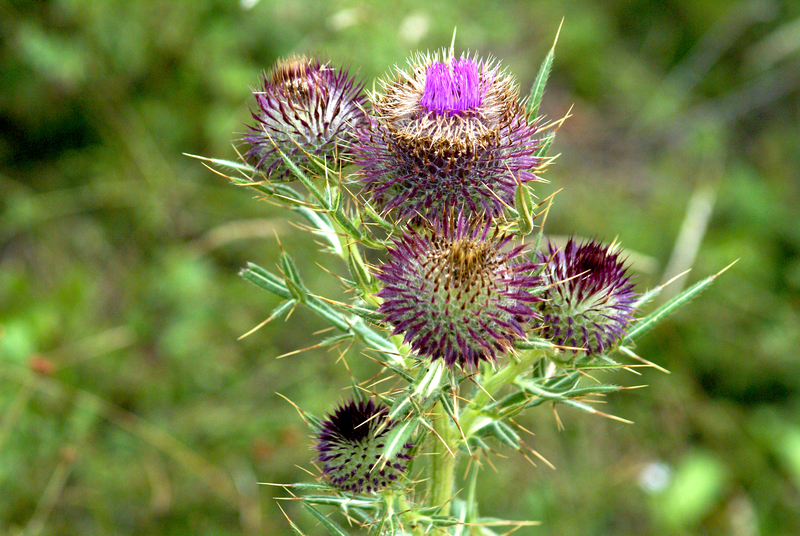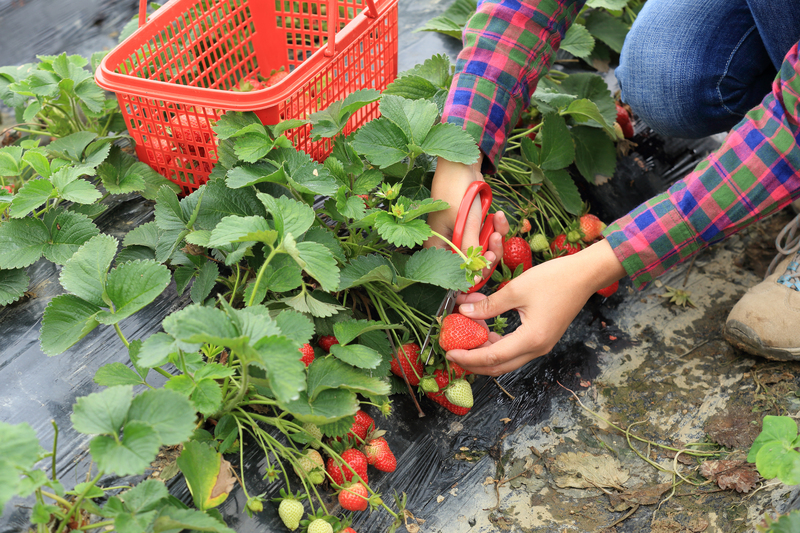From Seedling to Splendor: 9 Essential Tips for Fresh Gardeners
Posted on 31/05/2025
From Seedling to Splendor: 9 Essential Tips for Fresh Gardeners
Embarking on your first gardening journey can feel as exciting as it does overwhelming. But with the right guidance, growing your dream garden is possible--no matter your level of experience. In this comprehensive guide, we explore 9 essential tips for fresh gardeners to help transform seedlings into a magnificent garden paradise. Whether your goal is lush flowerbeds, a vegetable haven, or simply a greener space, these practical tips will set you on the path to gardening success.
Getting Started: The Fundamentals of Garden Mastery
Every expert gardener began with a single plant and the willingness to learn. Before diving into the soil, it's essential to start with some basic knowledge that will form the foundation for your growing adventure.
Why Gardening Is More than a Hobby
Gardening is more than just planting seeds; it's a rewarding practice that brings joy, improves mental well-being, and adds vibrancy to your environment. Not only does gardening beautify your outdoor space, but it also supports local ecosystems and even contributes to a sustainable lifestyle by offering fresh produce and flower blooms.

1. Choose the Right Plants for Your Region
One of the first and most important steps is choosing plants that will thrive in your specific location. Consider your USDA Hardiness Zone, sun exposure, and local climate.
- Research Your Area: Consult local gardening centers or online resources to learn which plants are best suited for your climate.
- Native Plants: Opt for native varieties that naturally adapt to your region and need less maintenance.
- Consider Your Space: Choose plants proportional to your garden--giant sunflowers might overwhelm a small patio, while petite herbs often thrive in containers.
Pro Tip:
If you're just beginning, select a mix of easy-to-grow plants like marigolds, zinnias, basil, or lettuce. These hardy species offer fast results and valuable confidence boosters for new gardeners.
2. Understand Your Soil
Healthy plants start with healthy soil. Understanding your garden's soil type is crucial for achieving that sought-after garden splendor.
- Test Your Soil: Use an at-home test kit to check your soil's pH, nutrient levels, and composition.
- Add Organic Matter: Mix compost, manure, or leaf mold to boost soil fertility and improve drainage.
- Mulch Matters: Applying mulch around plants not only retains moisture and stabilizes soil temperature but can also deter weeds and enrich soil as it breaks down.
Tip: Soil needs can change year to year; periodic testing keeps you ahead of any nutrient deficiencies.
3. Master Proper Watering Practices
Overwatering and underwatering are two of the most common mistakes made by novice gardeners. Learning to water correctly is essential for robust plant growth and a vibrant garden.
- Water Deeply, Not Frequently: Encourage deep root growth by thoroughly soaking soil rather than just sprinkling the surface.
- Morning is Best: Water early in the day so plants have time to absorb moisture and dry out before evening, reducing the risk of disease.
- Monitor Moisture: Check soil moisture with your finger; water only when the top inch feels dry for most plants.
4. Learn the Art of Plant Spacing
Plants need space to breathe, grow, and flourish. Crowding invites disease, weakens plants, and reduces yields. Understanding spacing guidelines improves your garden from the seedling stage to full bloom.
- Follow the Labels: Plant seedings according to recommended distances on plant tags or seed packets.
- Air Circulation: Allowing space between plants helps air flow, which keeps foliage dry and healthy.
- Consider Mature Size: Think about the final size of your plants; squished seedlings can quickly become overcrowded adults!
Avoid This:
Planting too closely can lead to disappointing results and increased maintenance.
5. Feed Your Garden--Smartly!
Proper nutrition is vital for spectacular growth and bountiful vegetables. Beginners are sometimes tempted to over-fertilize, which can harm rather than help.
- Start with Compost: Organic compost delivers a gentle, slow release of nutrients that won't overwhelm plants.
- Use Balanced Fertilizer: Choose a fertilizer with equal parts nitrogen, phosphorus, and potassium (N-P-K) unless your plants have specific needs.
- Follow Directions: Always stick to recommended application rates to avoid burning or stunting your plants.
Important:
More is not always better! Excess fertilizer can wash away into waterways and damage your local environment.
6. Master Pruning and Deadheading
Regularly pruning and deadheading plants can unlock spectacular blooms and healthy growth. Even new gardeners can learn to trim with confidence for maximum splendor.
- Prune for Shape: Remove leggy, damaged, or crossed stems to maintain attractive shapes and stimulate new growth.
- Deadhead Flowers: Snip off faded flowers to encourage further blooming and prevent unwanted self-seeding.
- Sanitize Tools: Always clean blades to avoid spreading diseases between plants.
Tip: Look up specific pruning requirements for each plant; for example, some flowering shrubs bloom on old wood, while others bloom on new shoots.
7. Keep a Garden Journal
The journey from fresh seedling to full garden glory is smoother when you learn from each season. Keeping a garden journal helps both new and seasoned gardeners refine their craft and build upon successes.
- Track Planting Dates: Record when and where you plant seeds or seedlings.
- Monitor Weather & Watering: Jot down rainfall, watering schedules, and temperature extremes.
- Note Successes & Failures: Learn from what worked or didn't--and don't forget to celebrate your achievements!
Why Journal?
Your journal becomes a valuable reference for future seasons, helping you cultivate a more splendid garden each year.
8. Watch for Pests and Diseases--and Act Early
Pest and disease challenges are part of every gardener's life, but early detection and proactive action are the keys to maintaining a flourishing garden.
- Scout Regularly: Inspect leaves, stems, and roots daily or weekly for signs of trouble.
- Promote Beneficial Insects: Ladybugs, lacewings, and spiders are natural allies in pest control.
- Use Natural Solutions: If problems arise, try organic remedies such as neem oil, insecticidal soap, or manual removal before reaching for harsh chemicals.
Remember: Healthy, well-cared-for plants are naturally less vulnerable to pests and diseases, so your earlier efforts in good planting and care really pay off here.
9. Practice Patience--and Enjoy the Process
Gardening is a journey, not a race! The transformation from seedling to splendor takes time and care. New gardeners should remember that setbacks and small failures are all part of the learning curve.
- Small Steps, Big Results: Tend to your garden a little each day, and soon you'll see real progress.
- Celebrate Growth: Take pride in every sprout, bloom, and harvest--no matter how modest.
- Keep Learning: Every season brings new lessons. Connect with fellow gardeners online or join a local gardening club for support and inspiration.
Bonus Tips for Transforming Your Backyard into a Garden Haven
- Choose the Right Tools: Invest in a sturdy trowel, watering can, gloves, and pruners.
- Start Small: Begin with containers or a tiny raised bed if you're short on space or time.
- Think About Wildlife: Add birdbaths, bee-friendly plants, or butterfly bushes to create a lively ecosystem.
- Plan for Year-Round Beauty: Include evergreens and plants with varied bloom times for multi-seasonal interest.

Common Questions for New Gardeners
What is the easiest vegetable to start with?
Leafy greens like lettuce and spinach, radishes, and bush beans are famously beginner-friendly and fast to sprout.
How can I keep weeds under control?
Mulching is your best friend! Also, pulling weeds when they're young prevents them from spreading seeds.
When should I start seeds indoors?
Most annual flowers and vegetables should be started 6-8 weeks before your last expected frost. Always check your seed packet for precise instructions.
Conclusion: Cultivating Splendor Starts with Care
Every thriving garden is the result of deliberate care, continued learning, and an appreciation for nature's process. With these nine essential gardening tips, you're equipped to nurture your seedlings to their fullest splendor--whether your goal is vibrant flowers, fresh vegetables, or simply a serene green retreat. Embrace each step, and soon, your garden will flourish as a true extension of your love and dedication to the earth.
Ready to grow? Let your garden journey begin today, and watch as every seedling transforms into a masterpiece of natural beauty!
Looking for more? Browse our other articles for detailed guides on composting, container gardening, and eco-friendly landscaping to continue your journey from fresh gardener to seasoned pro.

